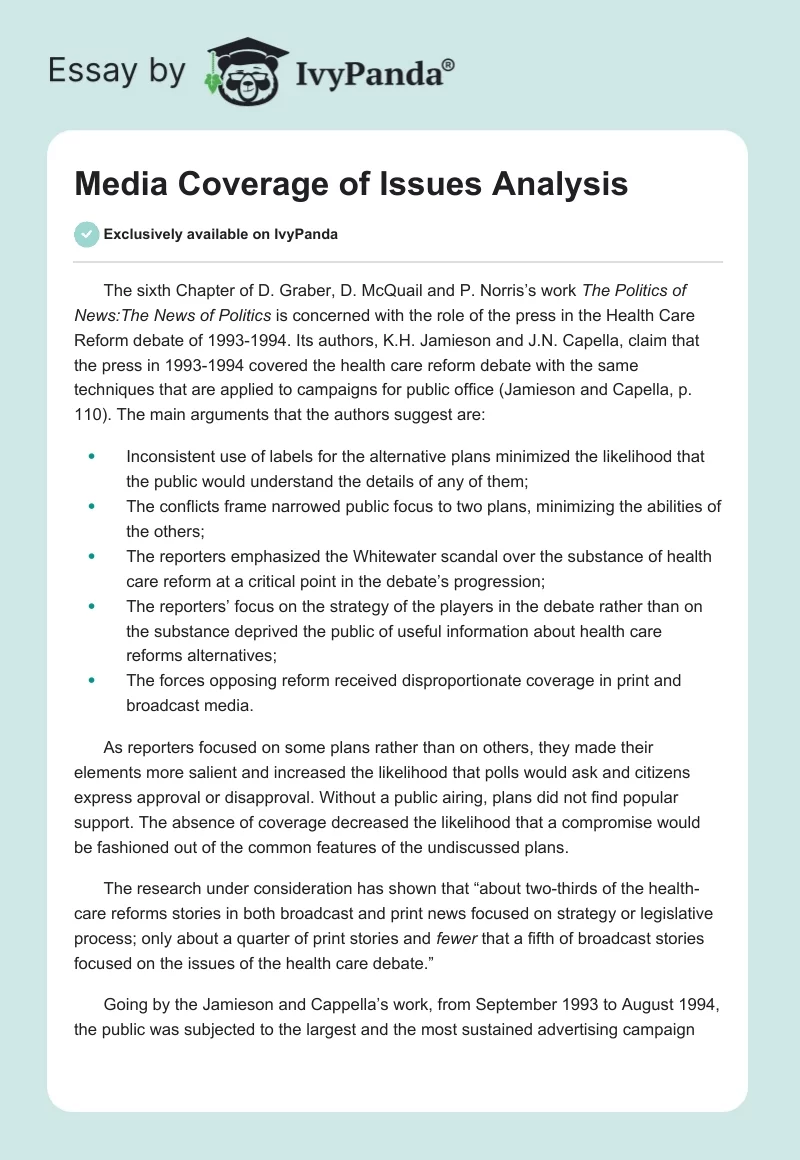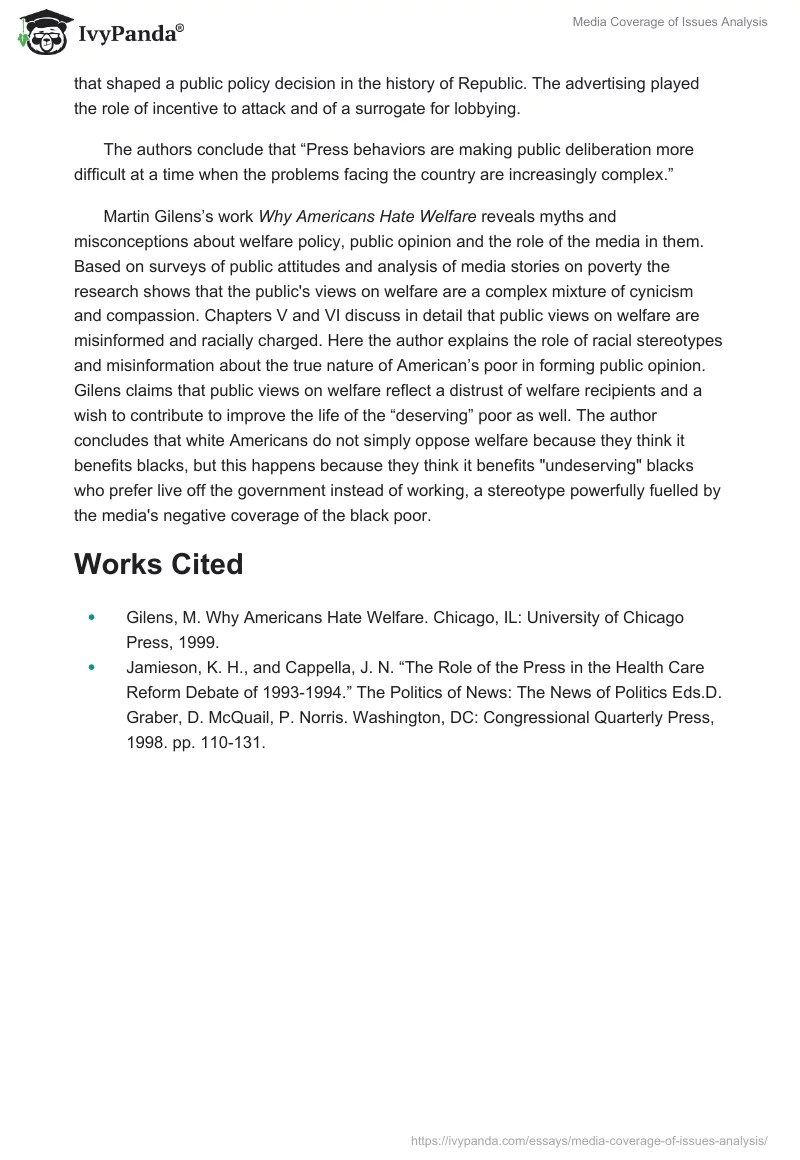The sixth Chapter of D. Graber, D. McQuail and P. Norris’s work The Politics of News:The News of Politics is concerned with the role of the press in the Health Care Reform debate of 1993-1994. Its authors, K.H. Jamieson and J.N. Capella, claim that the press in 1993-1994 covered the health care reform debate with the same techniques that are applied to campaigns for public office (Jamieson and Capella, p. 110). The main arguments that the authors suggest are:
- Inconsistent use of labels for the alternative plans minimized the likelihood that the public would understand the details of any of them;
- The conflicts frame narrowed public focus to two plans, minimizing the abilities of the others;
- The reporters emphasized the Whitewater scandal over the substance of health care reform at a critical point in the debate’s progression;
- The reporters’ focus on the strategy of the players in the debate rather than on the substance deprived the public of useful information about health care reforms alternatives;
- The forces opposing reform received disproportionate coverage in print and broadcast media.
As reporters focused on some plans rather than on others, they made their elements more salient and increased the likelihood that polls would ask and citizens express approval or disapproval. Without a public airing, plans did not find popular support. The absence of coverage decreased the likelihood that a compromise would be fashioned out of the common features of the undiscussed plans.
The research under consideration has shown that “about two-thirds of the health-care reforms stories in both broadcast and print news focused on strategy or legislative process; only about a quarter of print stories and fewer that a fifth of broadcast stories focused on the issues of the health care debate.”
Going by the Jamieson and Cappella’s work, from September 1993 to August 1994, the public was subjected to the largest and the most sustained advertising campaign that shaped a public policy decision in the history of Republic. The advertising played the role of incentive to attack and of a surrogate for lobbying.
The authors conclude that “Press behaviors are making public deliberation more difficult at a time when the problems facing the country are increasingly complex.”
Martin Gilens’s work Why Americans Hate Welfare reveals myths and misconceptions about welfare policy, public opinion and the role of the media in them. Based on surveys of public attitudes and analysis of media stories on poverty the research shows that the public’s views on welfare are a complex mixture of cynicism and compassion. Chapters V and VI discuss in detail that public views on welfare are misinformed and racially charged. Here the author explains the role of racial stereotypes and misinformation about the true nature of American’s poor in forming public opinion. Gilens claims that public views on welfare reflect a distrust of welfare recipients and a wish to contribute to improve the life of the “deserving” poor as well. The author concludes that white Americans do not simply oppose welfare because they think it benefits blacks, but this happens because they think it benefits “undeserving” blacks who prefer live off the government instead of working, a stereotype powerfully fuelled by the media’s negative coverage of the black poor.
Works Cited
- Gilens, M. Why Americans Hate Welfare. Chicago, IL: University of Chicago Press, 1999.
- Jamieson, K. H., and Cappella, J. N. “The Role of the Press in the Health Care Reform Debate of 1993-1994.” The Politics of News: The News of Politics Eds.D. Graber, D. McQuail, P. Norris. Washington, DC: Congressional Quarterly Press, 1998. pp. 110-131.


